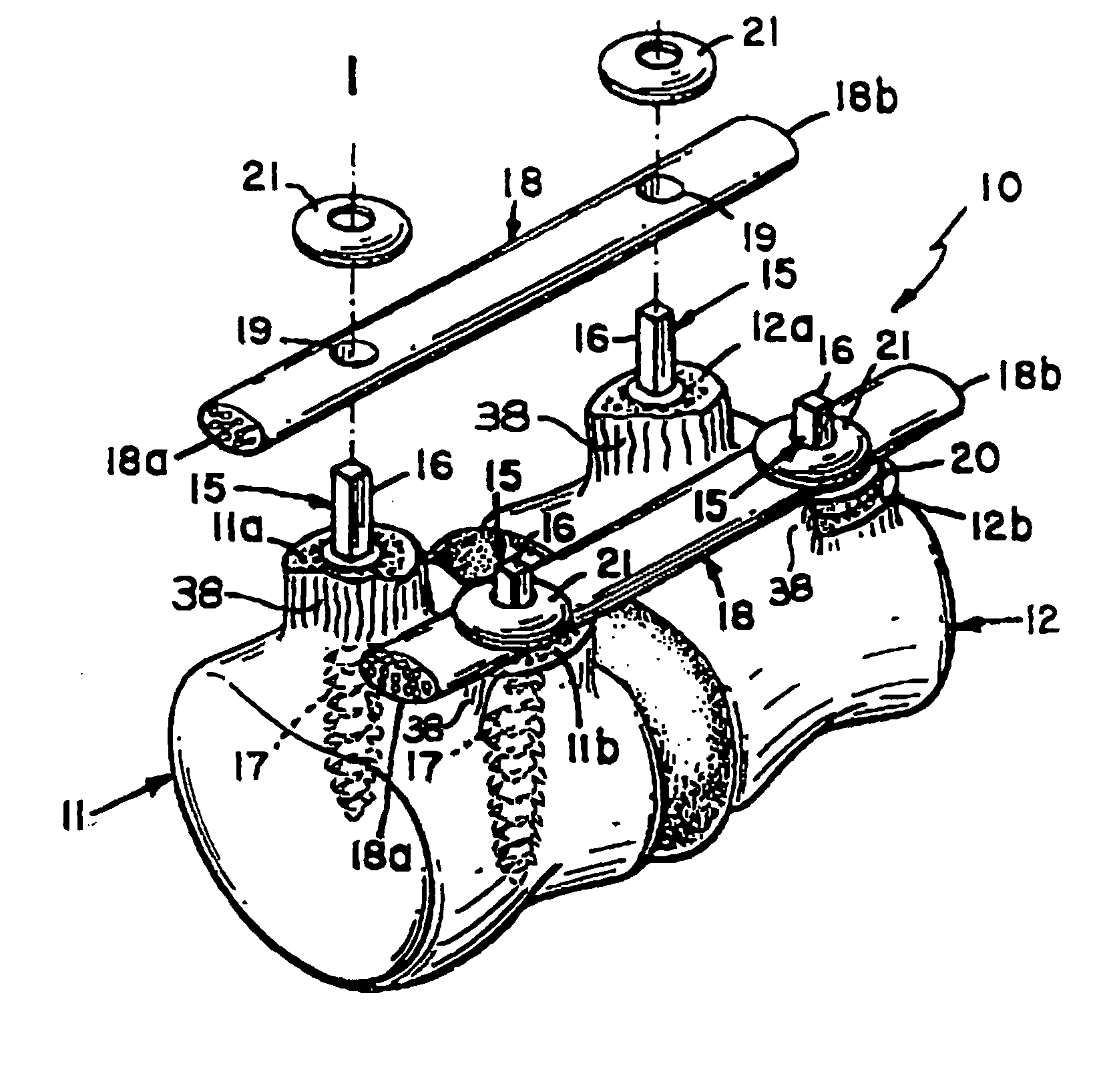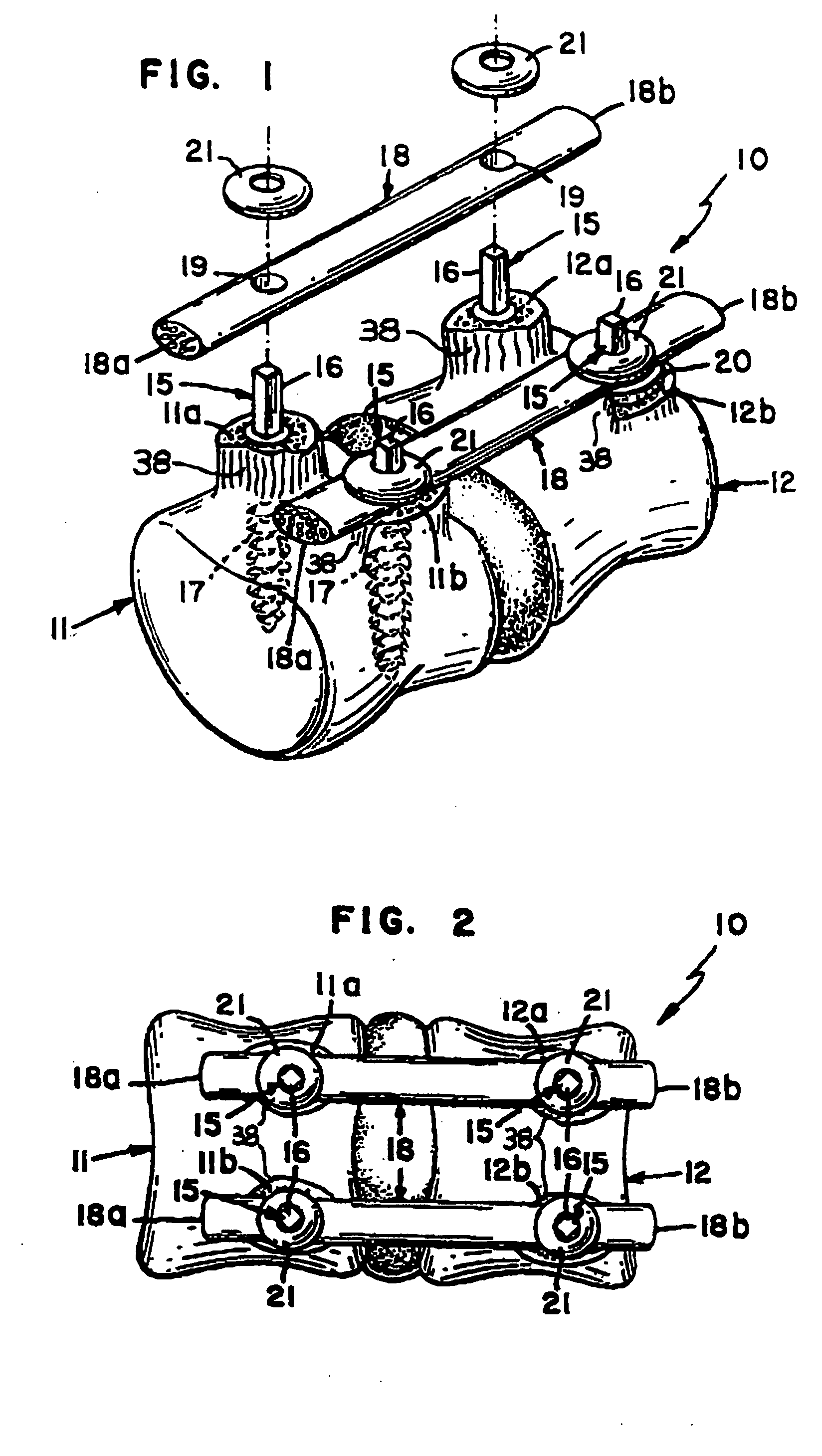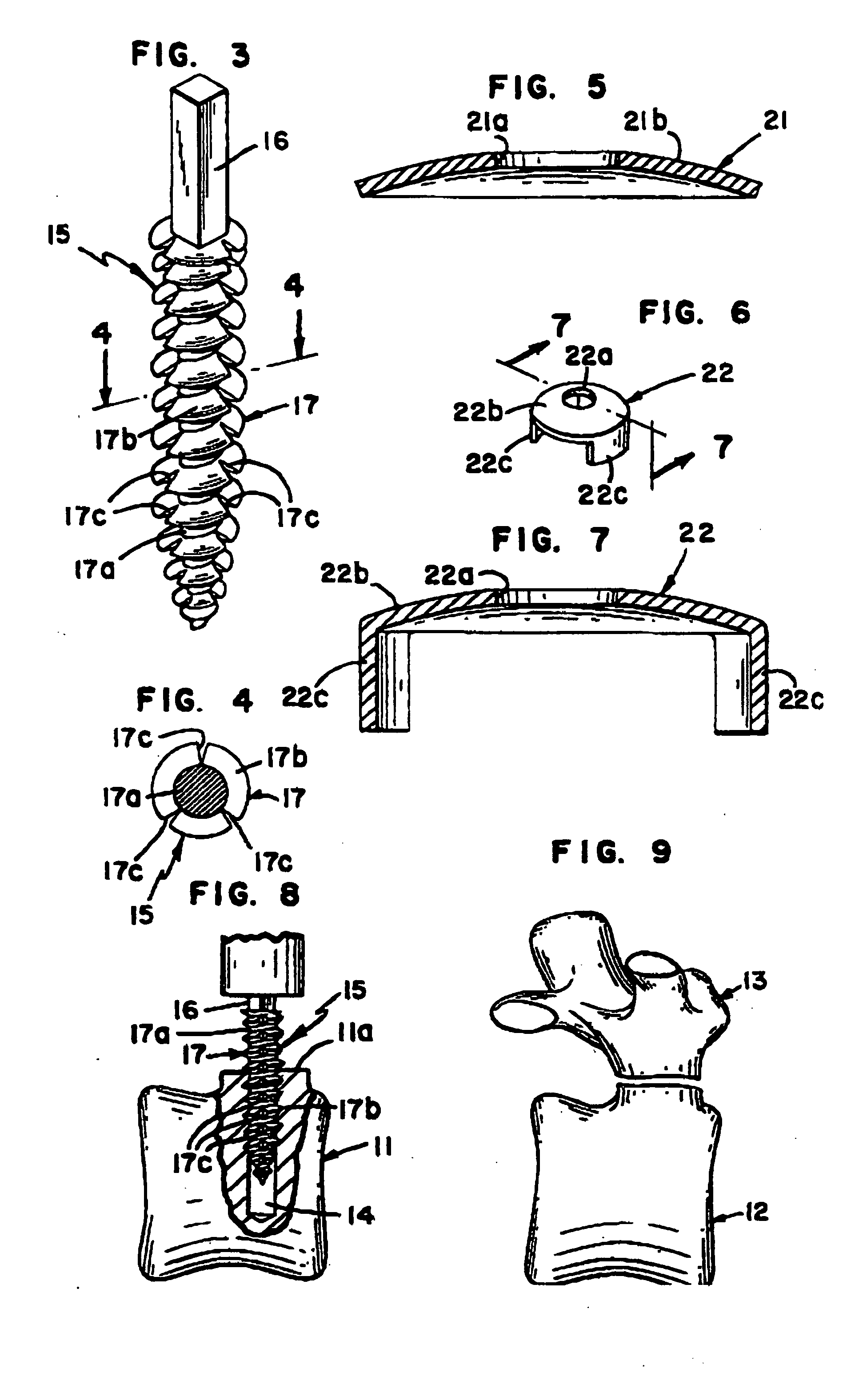Integral flexible spine stabilization device and method
a spine stabilization and flexible technology, applied in the field of integrated flexible spine stabilization devices and methods, can solve the problems of additional clinical problems, significant drawbacks of established methods of rigid spinal fusion, and need for additional surgery
- Summary
- Abstract
- Description
- Claims
- Application Information
AI Technical Summary
Benefits of technology
Problems solved by technology
Method used
Image
Examples
Embodiment Construction
[0034] Referring to the figures, wherein like numerals represent like parts throughout the several views, there is generally illustrated a device 10 useable for stabilizing at least a portion of a vertebral column. In FIG. 1, a first vertebra 11 and second vertebra 12 are shown. It should be understood that when the terms “first and second” vertebrae are used in this application, reference is being made only to vertebrae that are adjacent, and not to any specific vertebrae along the vertebral column. Each vertebra has a posterior element, designated as 13 shown in FIG. 9. When the posterior element 13 is removed from the vertebra, a first and second vertebral pedicle is exposed in each vertebra. FIG. 1 shows the first vertebral pedicle 11a and the second vertebral pedicle 11b of the first vertebra 11 and the first vertebral pedicle 12a and the second vertebral pedicle 12b of the second vertebra 12. If screws are used as anchoring devices, each of the pedicles (11a, 11b, 12a or 12b) ...
PUM
 Login to View More
Login to View More Abstract
Description
Claims
Application Information
 Login to View More
Login to View More - R&D
- Intellectual Property
- Life Sciences
- Materials
- Tech Scout
- Unparalleled Data Quality
- Higher Quality Content
- 60% Fewer Hallucinations
Browse by: Latest US Patents, China's latest patents, Technical Efficacy Thesaurus, Application Domain, Technology Topic, Popular Technical Reports.
© 2025 PatSnap. All rights reserved.Legal|Privacy policy|Modern Slavery Act Transparency Statement|Sitemap|About US| Contact US: help@patsnap.com



